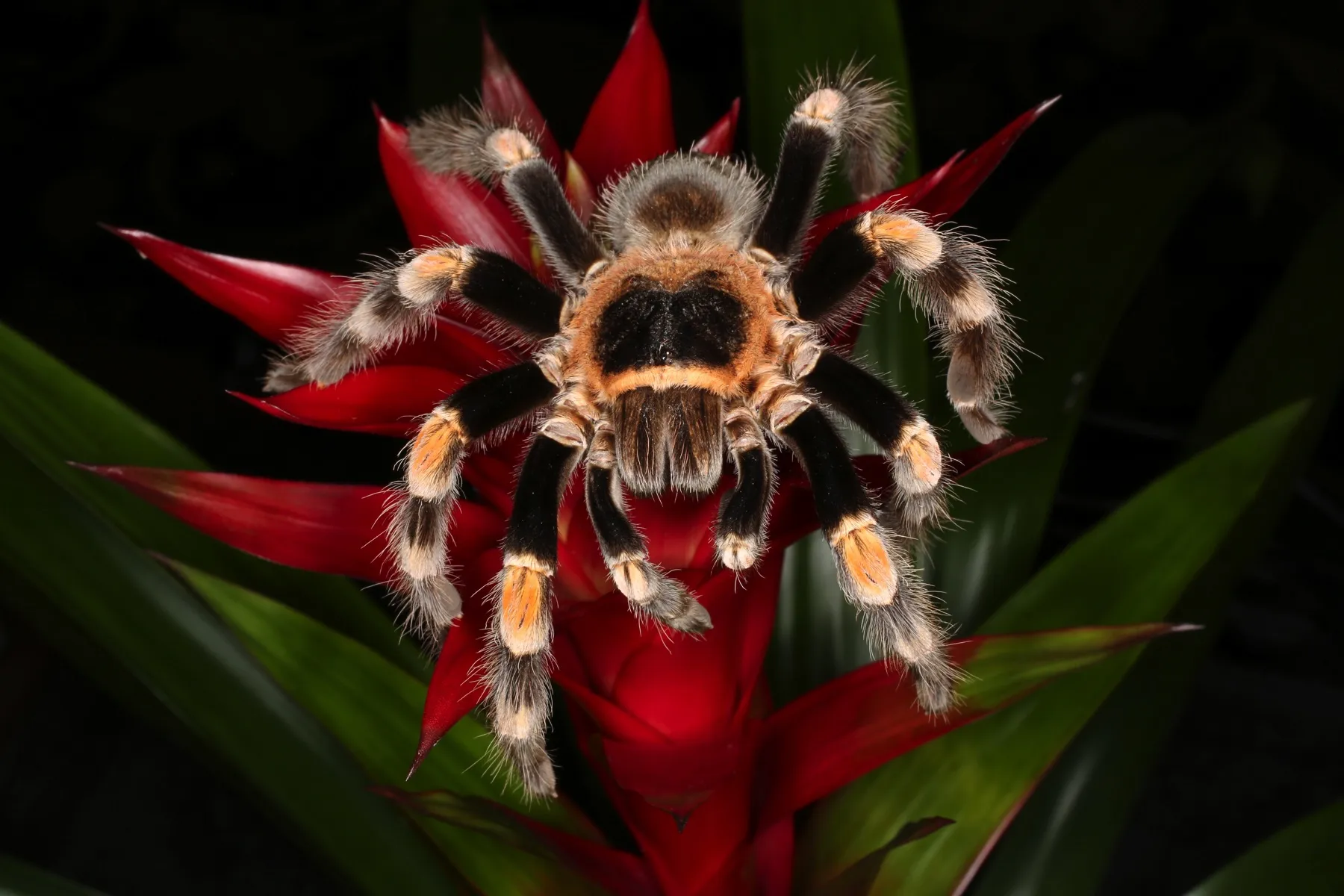Understanding the Redknee Tarantula
The Redknee Tarantula (Brachypelma hamorii), formerly known as Brachypelma smithi, is a popular pet tarantula prized for its striking appearance and relatively docile nature. Native to the arid regions of Mexico, these spiders have become a favorite among arachnid enthusiasts. This comprehensive guide provides essential information on how to care for your Redknee Tarantula, ensuring it thrives in a captive environment. From habitat setup and feeding to health maintenance and understanding their behavior, this guide covers everything you need to know to become a successful tarantula keeper. This majestic creature can become a rewarding pet with proper care.
Native Habitat and Origins
Redknee Tarantulas are primarily found in the dry scrublands and thorn forests of the Pacific coast of Mexico, specifically in areas with moderate temperatures and low humidity. They inhabit burrows in the ground, often under rocks or amongst roots, providing shelter from the intense sun and predators. Understanding their natural habitat is crucial for replicating their needs in captivity. These tarantulas are well-adapted to their environment, where they ambush prey. The landscape includes plants that offer shade, which is essential for maintaining the tarantula’s health.
Appearance and Characteristics
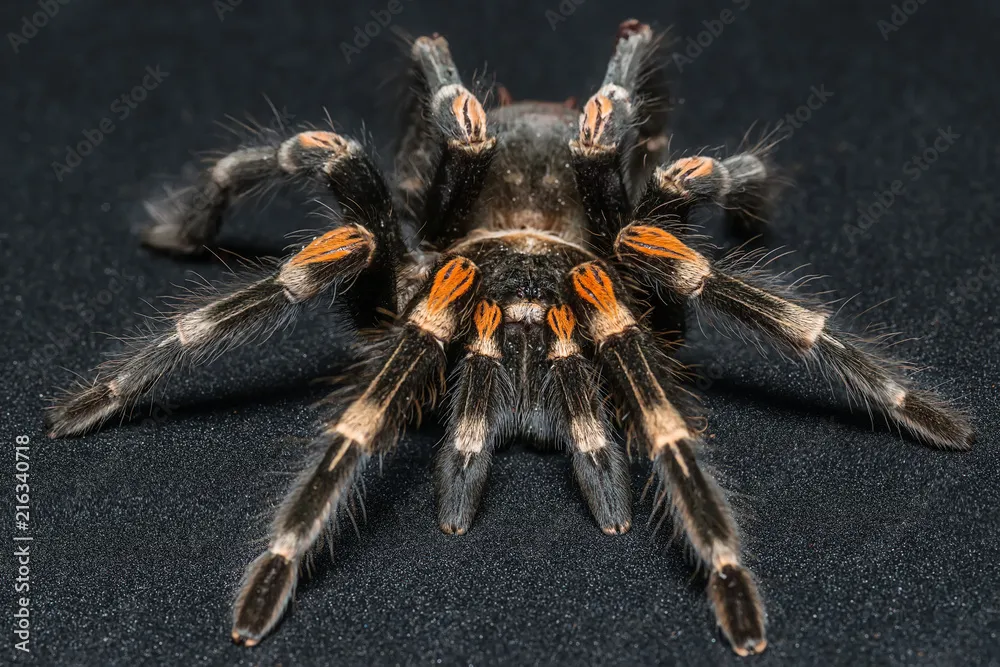
The Redknee Tarantula is easily recognizable by its striking coloration. The body is covered in dark hairs, while the legs showcase vibrant red-orange bands at the joints, hence the name. They are large spiders, with females growing up to 6 inches in leg span, while males tend to be slightly smaller. They are known for their longevity, with females living for 20-30 years and males typically living for 5-10 years. This makes them a long-term commitment. Their calm demeanor and distinctive appearance contribute to their popularity as pets, they are generally not aggressive but can flick urticating hairs as a defense mechanism.
Creating the Ideal Redknee Tarantula Habitat
Creating a suitable habitat is crucial for the well-being of your Redknee Tarantula. A well-designed enclosure mimics their natural environment, providing the necessary comfort, security, and opportunities for natural behaviors. This involves choosing the right enclosure size, substrate, and ensuring proper temperature and humidity levels. An appropriate habitat reduces stress, prevents health issues, and allows your tarantula to thrive. It’s important to remember that tarantulas are primarily solitary creatures, so keeping them individually is best. The setup should prioritize safety and enrichment.
Enclosure Size and Type
The enclosure should be appropriately sized for the tarantula’s size. A good starting point is a 10-gallon tank for a juvenile and a 20-gallon long tank or larger for an adult Redknee Tarantula. The enclosure should be escape-proof, with a secure lid. Ensure that the enclosure provides adequate ventilation. Glass or acrylic enclosures are common choices. The enclosure should have enough space for the tarantula to move around, burrow, and feel secure. Too small of an enclosure can lead to stress. Proper enclosure also helps maintain appropriate temperature and humidity levels.
Substrate Selection
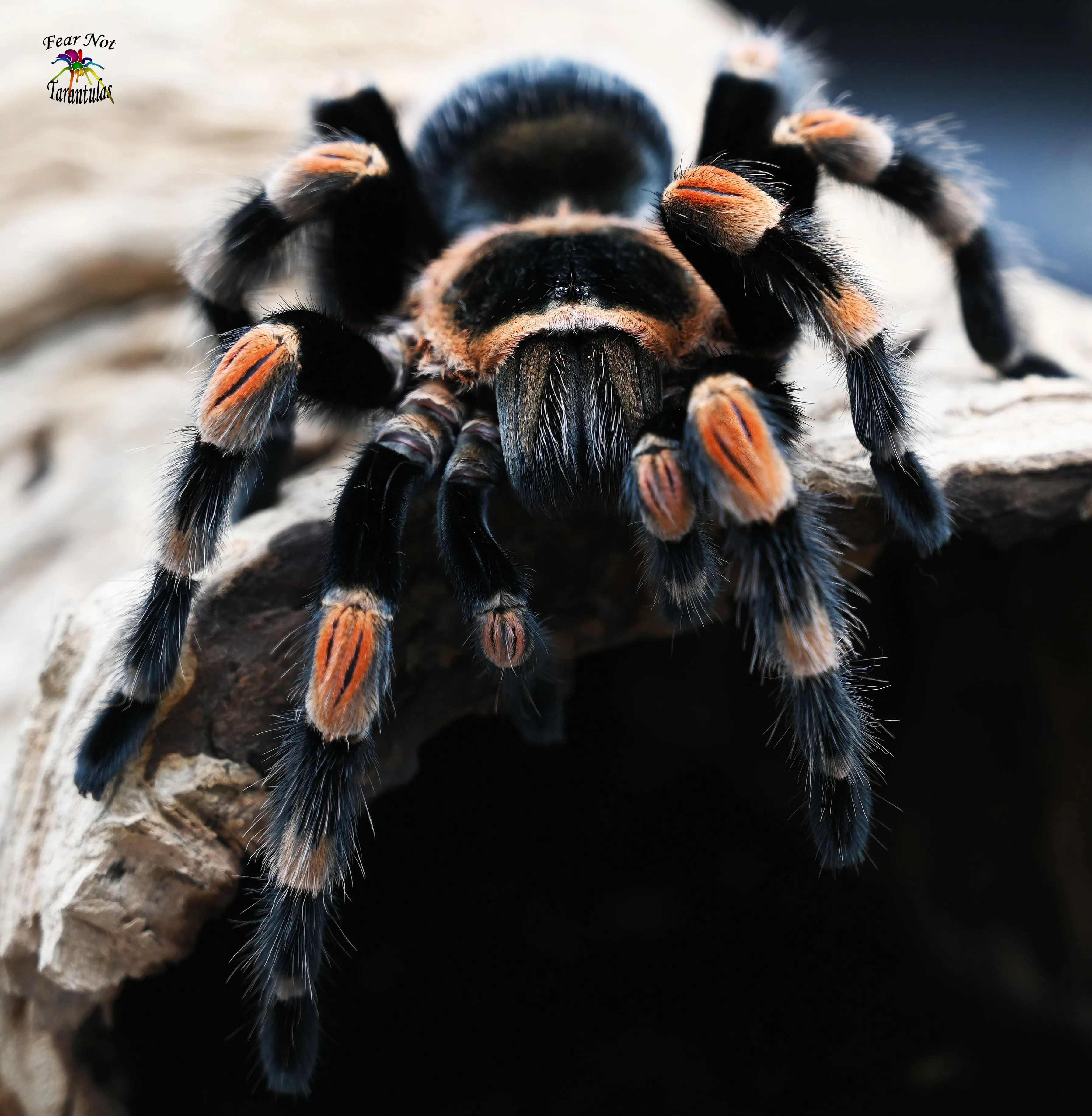
The substrate is the material that forms the base of the enclosure and is essential for burrowing and maintaining humidity. A mix of substrate materials is ideal. Suitable options include a mix of coconut fiber, peat moss, and a small amount of vermiculite or sphagnum moss. The substrate should be at least 4-6 inches deep to allow for burrowing. Avoid using materials that could be harmful to the tarantula, such as wood chips or gravel. It’s important to keep the substrate clean. The substrate should also be able to hold humidity, which is essential for molting. Regular spot cleaning is required to remove any uneaten food.
Temperature and Humidity Control
Redknee Tarantulas thrive in temperatures between 75-85°F (24-29°C). You can use a heat lamp or a heat mat attached to the side of the enclosure to maintain the right temperature. Avoid placing the heat source directly on the substrate. Humidity levels should be kept between 60-70%. You can measure humidity using a hygrometer. Misting the enclosure lightly once or twice a week, or providing a water dish, helps maintain humidity. Proper ventilation is essential to prevent mold growth, as well as to maintain healthy air. Regularly check the temperature and humidity levels to ensure your tarantula’s comfort.
Essential Equipment
Besides the enclosure, several pieces of equipment are crucial. A shallow water dish is essential for providing fresh water. A hide, such as a piece of cork bark or a half log, is important for providing a secure retreat. Use a thermometer and hygrometer to monitor temperature and humidity levels. Long-handled tongs are useful for feeding and removing uneaten food. A spray bottle is also useful for misting the enclosure. These equipment will help manage the environment and keep your tarantula safe. Having the correct equipment is very important for your tarantula’s health and well-being.
Feeding Your Redknee Tarantula
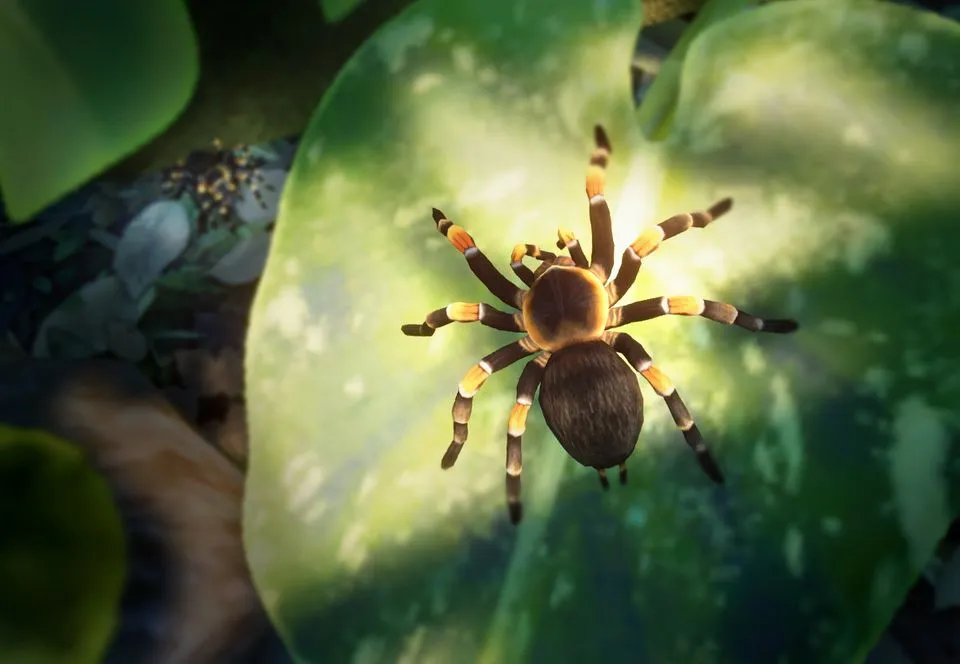
Feeding your Redknee Tarantula appropriately is fundamental to its health and longevity. They are voracious eaters, primarily insectivores, meaning they primarily consume insects. The diet and feeding schedule should be adjusted to the tarantula’s age and size. Overfeeding can be as detrimental as underfeeding. Regularly monitor your tarantula’s condition to ensure they are receiving adequate nutrition. Providing a variety of insects helps provide a balanced diet. Careful attention to feeding ensures your tarantula gets the necessary nutrients to thrive.
Diet and Food Types
The primary food source for Redknee Tarantulas should be insects, such as crickets, mealworms, dubia roaches, and locusts. You can buy these from pet stores. Always ensure the insects are gut-loaded before feeding them to your tarantula. Gut-loading means feeding the insects nutritious food before they are fed to the tarantula. This provides the tarantula with added vitamins and minerals. Avoid feeding wild-caught insects, as they may carry parasites or pesticides. A varied diet ensures your tarantula receives a broad spectrum of nutrients, keeping it healthy and strong. Some keepers occasionally feed pinkie mice to adult tarantulas as a treat.
Feeding Frequency and Portion Size
The feeding frequency varies depending on the tarantula’s age. Spiderlings and juveniles should be fed two to three times a week. Adults can be fed once or twice a week. Adjust the portion size based on the tarantula’s size and appetite. Generally, offer one to two appropriately sized insects per feeding. Remove any uneaten food within 24 hours to prevent mold growth and maintain cleanliness. Monitor your tarantula’s abdomen; if it appears overly plump, reduce the feeding frequency. A healthy tarantula will have a full abdomen, but avoid overfeeding as it can cause health issues.
Water and Hydration
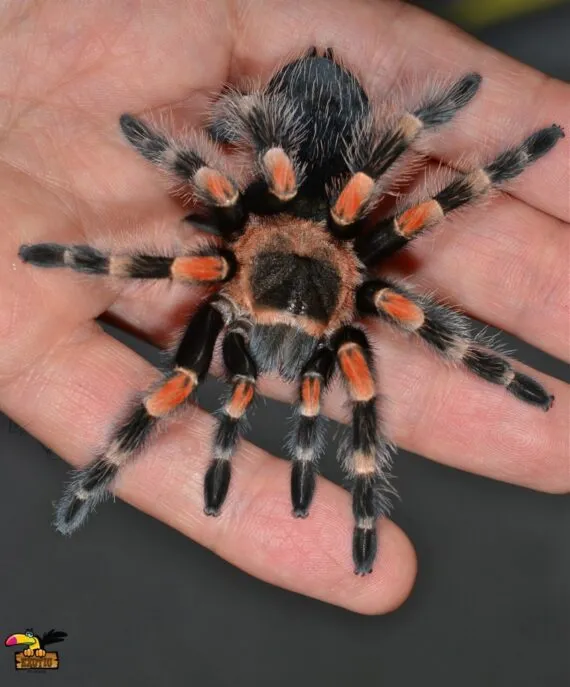
Providing fresh water is essential for the health of your Redknee Tarantula. Always have a shallow water dish filled with clean water available. This allows the tarantula to drink and maintain hydration. The water dish should be shallow enough to prevent drowning. Regularly change the water to prevent bacterial growth. You can also mist the enclosure lightly once or twice a week, particularly during molting periods, to increase humidity and aid hydration. Water is important for tarantulas because they are reliant on it for survival and well-being.
Handling and Safety
While Redknee Tarantulas are known for their docile nature, handling them should be approached with caution. They can be easily stressed, which may lead to them flicking urticating hairs or even biting. Always prioritize the safety of both yourself and your tarantula. Minimize handling when possible to reduce stress. It’s also important to be aware of potential risks. Respecting their space, understanding their behavior, and practicing safe handling techniques can help ensure a positive experience for both keeper and tarantula. Handling should not be done frequently.
Safe Handling Practices
If you must handle your Redknee Tarantula, do so slowly and gently. Avoid sudden movements or loud noises, which can startle the spider. Handle the tarantula over a soft surface, such as a bed or carpet, in case it falls. Never squeeze or grab the tarantula. Allow it to walk onto your hand or a soft brush. Wash your hands thoroughly before and after handling to remove any contaminants. It’s best to handle a tarantula for short periods. Always supervise children during handling. Using a soft brush to gently guide the tarantula is a safer option than direct handling, especially for beginners.
Recognizing Stress Signals
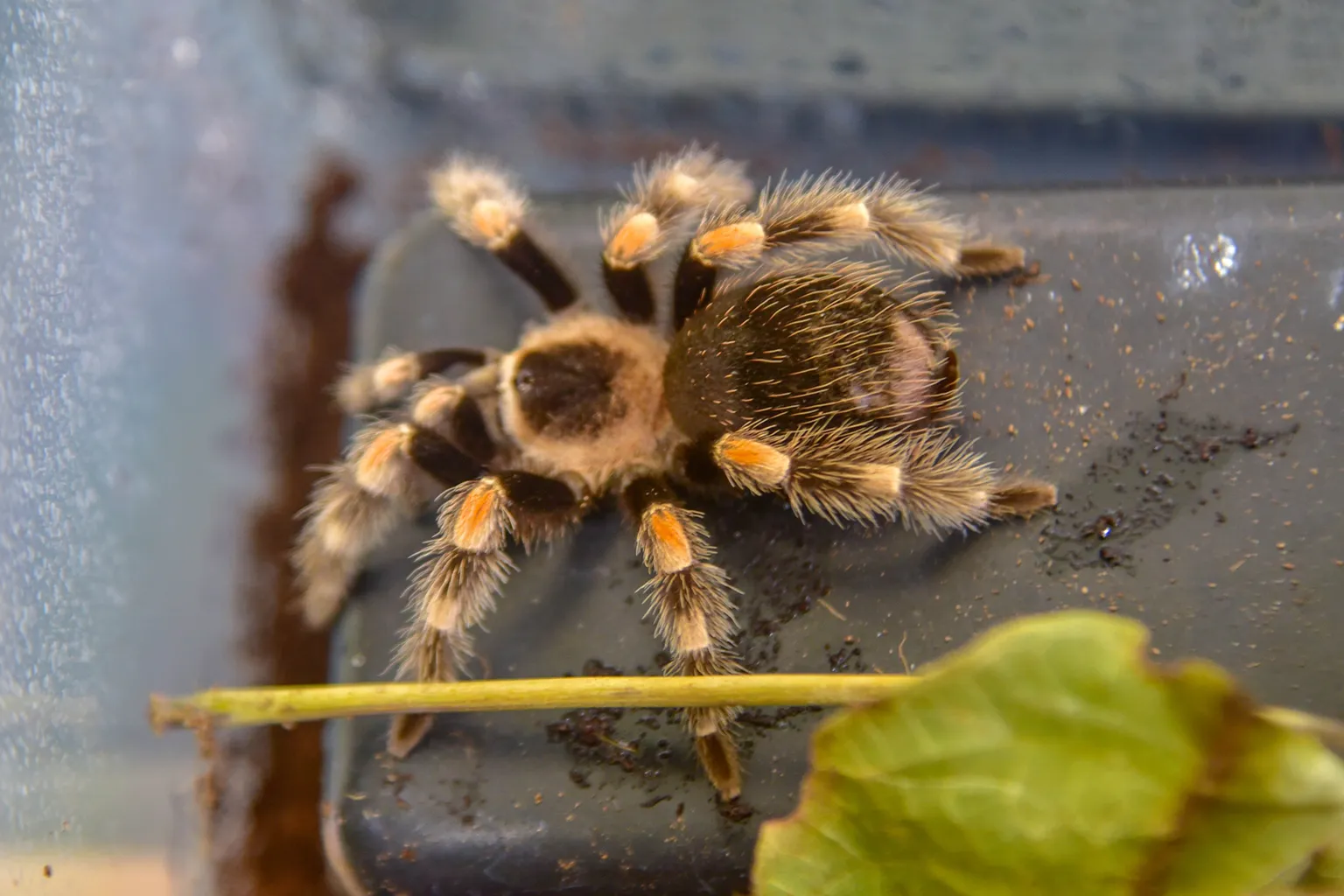
It’s crucial to recognize signs of stress in your Redknee Tarantula. A stressed tarantula may flick urticating hairs from its abdomen, raise its front legs in a defensive posture, or attempt to flee. Some tarantulas may display erratic movements. If your tarantula exhibits any of these behaviors, it’s best to leave it alone and allow it to calm down. Provide a secure environment by returning it to its enclosure immediately. Frequent or prolonged stress can weaken the tarantula and increase the risk of health problems. Regularly observe the tarantula to catch stress signals early.
Common Health Issues and Prevention
Preventing health issues is key to keeping your Redknee Tarantula healthy. By providing a clean and properly maintained environment and a balanced diet, you can significantly reduce the risk of illness. Several common issues can affect tarantulas, including dehydration, parasitic infections, and injuries. Early detection and appropriate treatment are essential. Preventive care is critical to maintaining a healthy environment. Proper care creates a thriving environment.
Molting Process
Molting is a natural process where the tarantula sheds its exoskeleton to grow. During this time, the tarantula is vulnerable and should not be disturbed. It will typically lie on its back. Provide a humid environment to assist the molting process. After molting, the tarantula’s new exoskeleton will be soft, and it will take a few days to harden. Do not feed the tarantula immediately after molting; wait a week. The molting frequency depends on the age and growth rate of the tarantula. Creating the proper environment reduces issues during molting.
Identifying and Treating Diseases
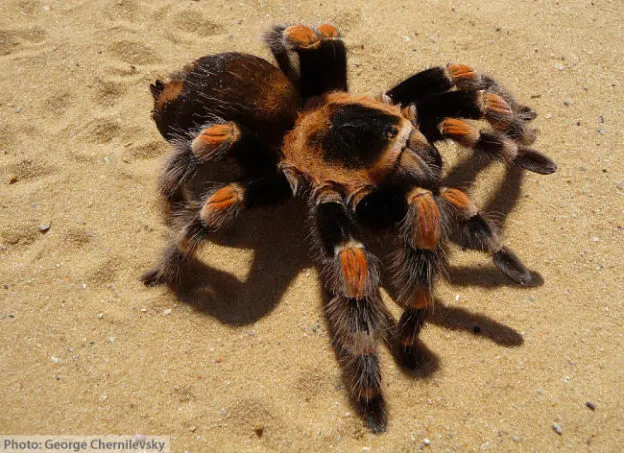
While Redknee Tarantulas are generally hardy, they can be susceptible to certain diseases. Common issues include parasitic infections caused by mites or nematodes. If you notice symptoms like lethargy, loss of appetite, or unusual behavior, consult a veterinarian experienced in exotic animals. Preventative measures, such as maintaining a clean enclosure and quarantine new tarantulas, are key. Always use separate tools when handling different tarantulas to avoid cross-contamination. Seek professional advice promptly if you suspect your tarantula is ill to ensure it receives the proper care and treatment. Early intervention can often improve the outcome significantly.
Lifespan and Behavior
Understanding the lifespan and behavior of your Redknee Tarantula can enhance your enjoyment of this unique pet. Learning their typical behavior patterns and expectations for their lifespan helps you provide the appropriate care. Their lifespan is important, considering it is a long-term commitment. You can better appreciate their unique characteristics and adjust your care accordingly. This will further strengthen the bond between you and your tarantula.
Typical Behavior Patterns
Redknee Tarantulas are generally docile and spend most of their time in their burrows. They are primarily nocturnal, being most active at night. They may sometimes be seen exploring their enclosure or waiting near the entrance of their burrow for prey. Their behavior can vary depending on their mood and environmental conditions. Some may be more reclusive, while others may be more active. If your tarantula is not eating, it could be a sign that the tarantula is getting ready to molt. Be aware of these changes. Observe your tarantula regularly, paying attention to any changes in behavior.
Lifespan Expectations
Female Redknee Tarantulas have an average lifespan of 20-30 years, while males typically live for 5-10 years. The lifespan of the tarantula depends on factors such as care, genetics, and environmental conditions. Provide the proper care, and your tarantula can live a long and healthy life. The difference in lifespan between males and females is due to their reproductive cycles. It is essential to be aware of the lifespan before deciding to keep one as a pet. Knowing their lifespan helps in planning your care and making a long-term commitment.
Breeding Information
Breeding Redknee Tarantulas in captivity is a more advanced aspect of tarantula keeping. It involves careful preparation, monitoring, and understanding of the reproductive process. Not everyone will choose to breed tarantulas. Breeding can be rewarding, but requires commitment, and specialized knowledge. If you’re interested in breeding, research this process. You need to understand their mating process.
Mating and Egg Sacs
Successful breeding requires a male and female tarantula. The male tarantula will construct a sperm web and transfer the sperm to his palpal bulbs. He will then mate with the female. The female will then produce an egg sac. The egg sac can contain hundreds of eggs. The female will usually guard the egg sac until the spiderlings hatch. The breeding process should be carefully managed to ensure the safety of both tarantulas. This requires knowledge of the tarantulas’ behavior and needs. The safety of both the male and female must be a priority.
Caring for Spiderlings
Once the spiderlings hatch, they will need to be separated into individual enclosures to prevent cannibalism. Spiderlings require smaller prey, such as fruit flies or pinhead crickets. The enclosure needs to be kept at the right temperature and humidity. Provide a shallow water dish for drinking. The spiderlings will molt several times as they grow, each time increasing in size. The proper care of spiderlings will ensure they grow into healthy adult Redknee Tarantulas. This stage can be delicate, requiring careful monitoring and attention. Once the spiderlings are strong enough, they can be sold or kept as pets.
